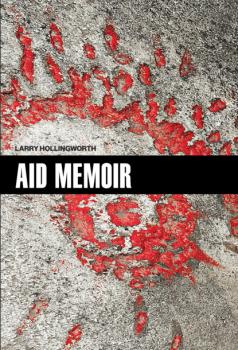Ingram
Все книги издательства IngramWhere's Rodney?
A Black boy’s transformative day out in nature, recommended by Social Justice Books and We Are Kid Lit Collective Rodney is that kid who just can’t sit still. He's inside, but he wants to be outside. Outside is where Rodney always wants to be. Between school and home, there is a park. He knows all about that park. It’s that triangle-shaped place with the yellow grass and two benches where grown-ups sit around all day. Besides, his momma said to stay away from that park. [b]When Rodney finally gets a chance to go to a real park, with plenty of room to run and climb and shout, and to just be himself, he will never be the same.
Waves and Beaches
The Bestselling Classic Updated for Surfers, Sailors, Oceanographers, Climate Activists, and Those Who Love the Sea First published in 1963 and updated in 1979, this classic was an essential handbook for anyone who studies, surfs, protects, or is fascinated by the ocean. The original author, Willard Bascom, was a master of the subject and included a wealth of information, based on theory and statistics, but also anecdotal observation and personal experience. It brought to the general public understanding of the awesome and complex power of the waves. This revision from Kim McCoy adds recent facts and anecdotes to update the book’s relevance in the time of climate change. One of the most significant effects of global warming will be sea-level rise. What will this mean to waves and beaches, and what effects are we already seeing? New text and photos cover events such as the Indian Ocean tsunami of 2004, Hurricane Katrina flooding of 2005, and the 2011 earthquake and resulting devastation in Fukishima. As well as students, surfers, and the general public, this updated edition of a beloved classic is an essential handbook for climate scientists and ocean activists, providing clear explanations and detailed resources for the constant battle to preserve the shore.
A Skein of Thought
This book is the result of a strong collaboration between the Permanent Mission of Ireland to the United Nations and Fordham University’s Institute of International Humanitarian Affairs. It is a record of a series of distinguished lectures that explored the current challenges to policymakers and humanitarian actors as they focus their efforts on larger and more complex emergencies. The contributors to this book both identify innovative measures in addressing established problems and address hitherto under-researched emerging issues. A Skein of Thought is the product of this fruitful partnership. Ireland has, through its longstanding peacekeeping, its embrace of multi-lateralism, and its investment in development and humanitarian solutions, been a global leader in confronting and mitigating global disasters. In a similar way, the Institute of International Humanitarian Affairs has been a global leader in humanitarian training, publications, and research. A Skein of Thought: The Ireland at Fordham Humanitarian Lecture Series , then, represents this link between theory and practice. The Refuge Press The Refuge Press is an independent humanitarian imprint that was founded in 2019. Following on from a successful International Humanitarian Affairs Series through Fordham University Press, The Refuge Press, with Brendan Cahill as its Publisher, publishes four books per year. The Refuge Press books challenge humanitarian thinking and offer personal and professional reflections on global crises.
The Migrant Diaries
What is it like to run away from bombing, lose your family, and work out how to take care of yourself in a foreign country when you are seven years old? What do you do when the woman who promised you a good job in Europe turns out to have sold you into prostitution? How do you escape from torture and detention in Libya? What is it like to almost drown in the Mediterranean and then be confined in a garbage and rat-filled settlement on a Greek island for years?In this book, Lynne Jones answers these questions by combining direct testimony from children with a blazingly frank eyewitness account of providing mental health support on the front line of the migrant crisis across Europe and Central America in the past five years. Her diaries document how a compassionate welcome shifted to indifference and hostility toward those seeking refuge from war, disaster, and poverty in the richest countries in the world. They shine light on what it is like to be caught up on the front lines of the migrant crises in Europe and Central America, either as a person in flight or as a volunteer trying to help. They show how people who have fled war, poverty, and disaster—trapped in degrading, humiliating living conditions—have responded with resourcefulness and creativity. In the absence of most large professional humanitarian agencies, migrants and volunteers together have created a new form of humanitarianism that challenges old ways of working.Today there are 79 million forcibly displaced people in the world today, 1 percent of the world’s population. Understanding the perspectives of people on the move has never been more important. The Author's profits from this book will be donated to the charity: CHOOSE LOVE/HELP REFUGEES
Aid Memoir
Larry Hollingworth, current visiting Professor of Humanitarian Studies at Fordham University in New York City, served as head of the UNHCR’s efforts in Bosnia throughout the lengthy conflict that plagued the former Yugoslavia in the early to mid ’90s.<i> Aid Memoir</i> follows Larry and his UN colleagues throughout multiple efforts to provide much-needed relief for besieged, isolated, and desperate communities riddled by senseless killing and aggression. The characters encountered throughout are at times thrilling, at times frightening. Larry spares no details, however troubling, and therefore shines a telling light on the reality of the situation that most will remember to have watched on their television screens.
The American Museum of Natural History and How It Got That Way
Tells the story of the building of the American Museum of Natural History and Hayden Planetarium, a story of history, politics, science, and exploration, including the roles of American presidents, New York power brokers, museum presidents, planetarium directors, polar and African explorers, and German rocket scientists. The American Museum of Natural History is one of New York City’s most beloved institutions, and one of the largest, most celebrated museums in the world. Since 1869, generations of New Yorkers and tourists of all ages have been educated and entertained here. Located across from Central Park, the sprawling structure, spanning four city blocks, is a fascinating conglomeration of many buildings of diverse architectural styles built over a period of 150 years. The first book to tell the history of the museum from the point of view of these buildings, including the planned Gilder Center, The American Museum of Natural History and How It Got That Way contextualizes them within New York and American history and the history of science. Part II, “The Heavens in the Attic,” is the first detailed history of the Hayden Planetarium, from the museum’s earliest astronomy exhibits, to Clyde Fisher and the original planetarium, to Neil deGrasse Tyson and the Rose Center for Earth and Space, and it features a photographic tour through the original Hayden Planetarium. Author Colin Davey spent much of his childhood literally and figuratively lost in the museum’s labyrinthine hallways. The museum grew in fits and starts according to the vicissitudes of backroom deals, personal agendas, two world wars, the Great Depression, and the Cold War. Chronicling its evolution―from the selection of a desolate, rocky, hilly, swampy site, known as Manhattan Square to the present day―the book includes some of the most important and colorful characters in the city’s history, including the notoriously corrupt and powerful “Boss” Tweed, “Father of New York City” Andrew Haswell Green, and twentieth-century powerbroker and master builder Robert Moses; museum presidents Morris K. Jesup, Henry Fairfield Osborn, and Ellen Futter; and American presidents, polar and African explorers, dinosaur hunters, and German rocket scientists. Richly illustrated with period photos, The American Museum of Natural History and How It Got That Way is based on deep archival research and interviews.
Girl Head
Girl Head shows how gender has had a surprising and persistent role in film production processes, well before the image ever appears onscreen. For decades, feminist film criticism has focused on issues of representation: images of women in film. But what are the feminist implications of the material object underlying that image, the filmstrip itself? What does feminist analysis have to offer in understanding the film image before it enters the realm of representation? Girl Head explores how gender and sexual difference have been deeply embedded within film materiality. In rich archival and technical detail, Yue examines three sites of technical film production: the film laboratory, editing practices, and the film archive. Within each site, she locates a common motif, the vanishing female body, which is transformed into material to be used in the making of a film. The book develops a theory of gender and film materiality through readings of narrative film, early cinema, experimental film, and moving image art.This original work of feminist media history shows how gender has had a persistent role in film production processes, well before the image ever appears onscreen.
Shibboleth
Working from the Bible to contemporary art, Shibboleth surveys the linguistic performances behind the politics of border crossings and the policing of identities. In the Book of Judges, the Gileadites use the word shibboleth to target and kill members of a closely related tribe, the Ephraimites, who cannot pronounce the initial shin phoneme. In modern European languages, shibboleth has come to mean a hard-to-falsify sign that winnows identities and establishes and confirms borders. It has also acquired the ancillary meanings of slogan or cliché. The semantic field of shibboleth thus seems keyed to the waning of the logos in an era of technical reproducibility—to the proliferation of technologies and practices of encryption, decryption, exclusion and inclusion that saturate modern life. The various phenomena we sum up as neoliberalism and globalization are unimaginable in the absence of shibboleth -technologies.In the context of an unending refugee crisis and a general displacement, monitoring and quarantining of populations within a global regime of technics, Paul Celan’s subtle yet fierce reorientation of shibboleth merits scrupulous reading. This book interprets the episode in Judges together with Celan’s poems and Jacques Derrida’s reading of them, as well as passages from William Faulkner’s Absalom, Absalom! and Doris Salcedo’s 2007 installation Shibboleth at the Tate Modern. Redfield pursues the track of shibboleth : a word to which no language can properly lay claim—a word that is both less and more than a word, that signifies both the epitome and the ruin of border control technology, and that thus, despite its violent role in the Biblical story, offers a locus of poetico-political affirmation.









